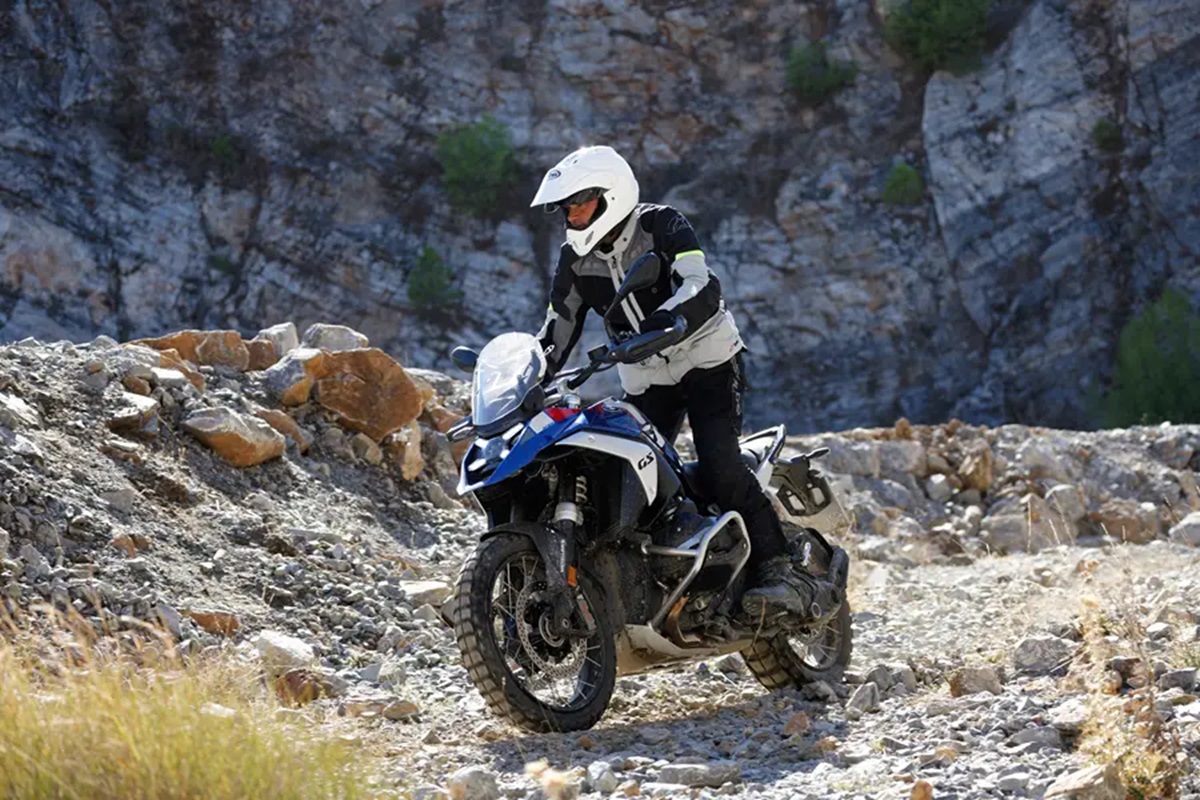BMW’s new R1300GS, priced at £15,990, is a noteworthy addition to the adventure bike market. It’s the lightest, most powerful, and compact GS in BMW’s lineup. This updated model comes with an impressive range of standard features, a fresh look, and a plethora of optional extras, such as an electronic ride height system, semi-active suspension with variable spring rates, and even a collision warning system that can apply the brakes in emergencies. Additionally, it offers a variety of front and rear seats, screen options, levers, new luggage choices, and extended travel off-road suspension, providing riders with a wide array of customization.

In response to increasing competition from adventure bikes like the Ducati Multistrada V4, Triumph Tiger 1200, KTM 1290 Super Adventure S, and Honda Africa Twin, BMW has made necessary updates to their iconic GS model. The 2023 R1300GS retains the GS identity but emerges as a smaller, smoother, lighter, more agile, and refined version compared to its predecessor, the BMW R1250GS. The changes and enhancements are substantial, and while they don’t transform the riding experience completely, they make the new GS a versatile machine catering to a broader range of riders and riding situations.
It’s essential to understand that the R1300GS is not designed to outperform KTM’s off-road capabilities, offer the same precision on the road as the latest Triumph Tiger 1200, or match the superbike-like speed of a Ducati Multistrada V4. However, the GS has never needed these attributes to maintain its popularity and continues to excel in off-road adventures, touring, and spirited riding. It remains an exceptional all-in-one bike that’s challenging to surpass.
BMW has made significant changes to the bike’s structure by replacing the old tubular steel chassis with a compact pressed steel shell that uses the engine as a structural component. The subframe is now constructed from cast aluminum, and a lighter lithium-ion battery comes as standard. The updated styling marks a significant departure from the chunkier appearance of the previous R1250GS. Despite the increased engine size, the R1300GS feels smaller and more streamlined. It’s a slimmer bike with a reduced fuel tank size. However, it retains the familiar GS character and design elements, ensuring a comfortable and recognizable riding experience.
Despite the new chassis, the R1300GS maintains a ride quality reminiscent of its predecessor. It’s stable and forgiving with a superb suspension that can handle a variety of riding conditions. While it may not be the fastest steering bike, it’s more agile and precise than before. This makes it easier to navigate and offers a more enjoyable riding experience. The front calipers and larger diameter discs provide strong and progressive braking performance, supported by a powerful rear brake.
The R1300GS’s 1300cc air/liquid-cooled boxer twin engine is more powerful and torque-rich throughout the rev range compared to its predecessor, especially between 3600rpm and 7800rpm. With a new oversquare layout, increased bore size, and reduced stroke, the engine delivers 143bhp of power at 7750rpm and 110lb-ft of torque at 6500rpm. The redline reaches 9000rpm, and the engine uses the ShiftCam valve timing system for improved low-end grunt and high-end performance. It breathes through a new stainless-steel exhaust.
This new engine is not only more powerful but also lighter and more compact, resulting in a more agile bike. The gearbox, now mounted beneath the engine, has improved accuracy, especially when equipped with the optional up/down quickshifter. The engine provides a flexible and predictable power delivery, making it ideal for road riding. It maintains its distinctive boxer twin burble at low revs and delivers strong acceleration, particularly in its sweet spot. The new engine’s refinement is complemented by smoother power delivery, making it user-friendly at road speeds.
Leave a Reply